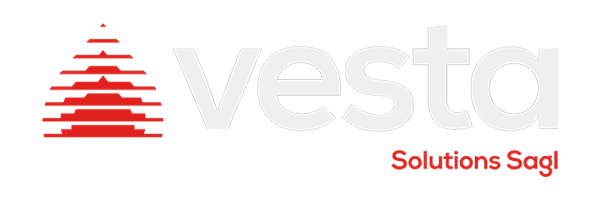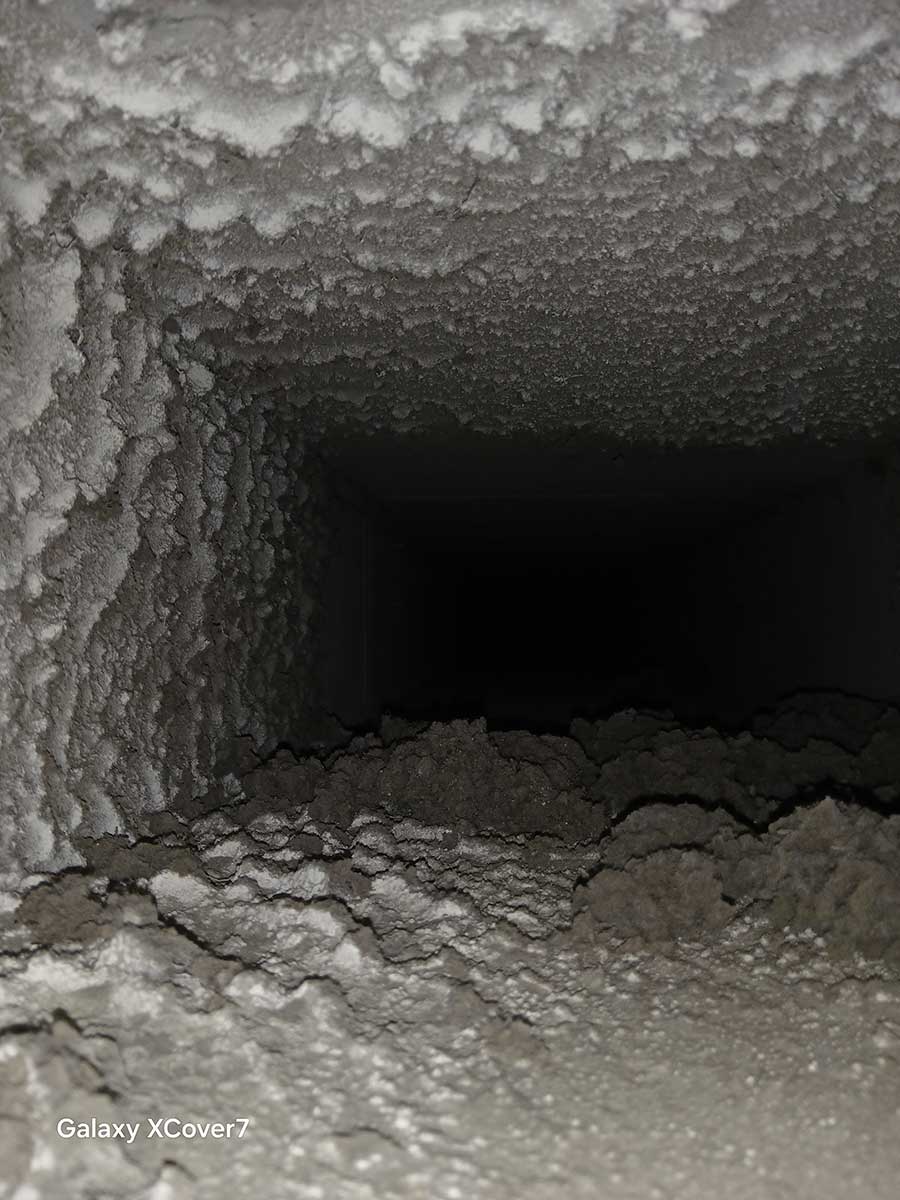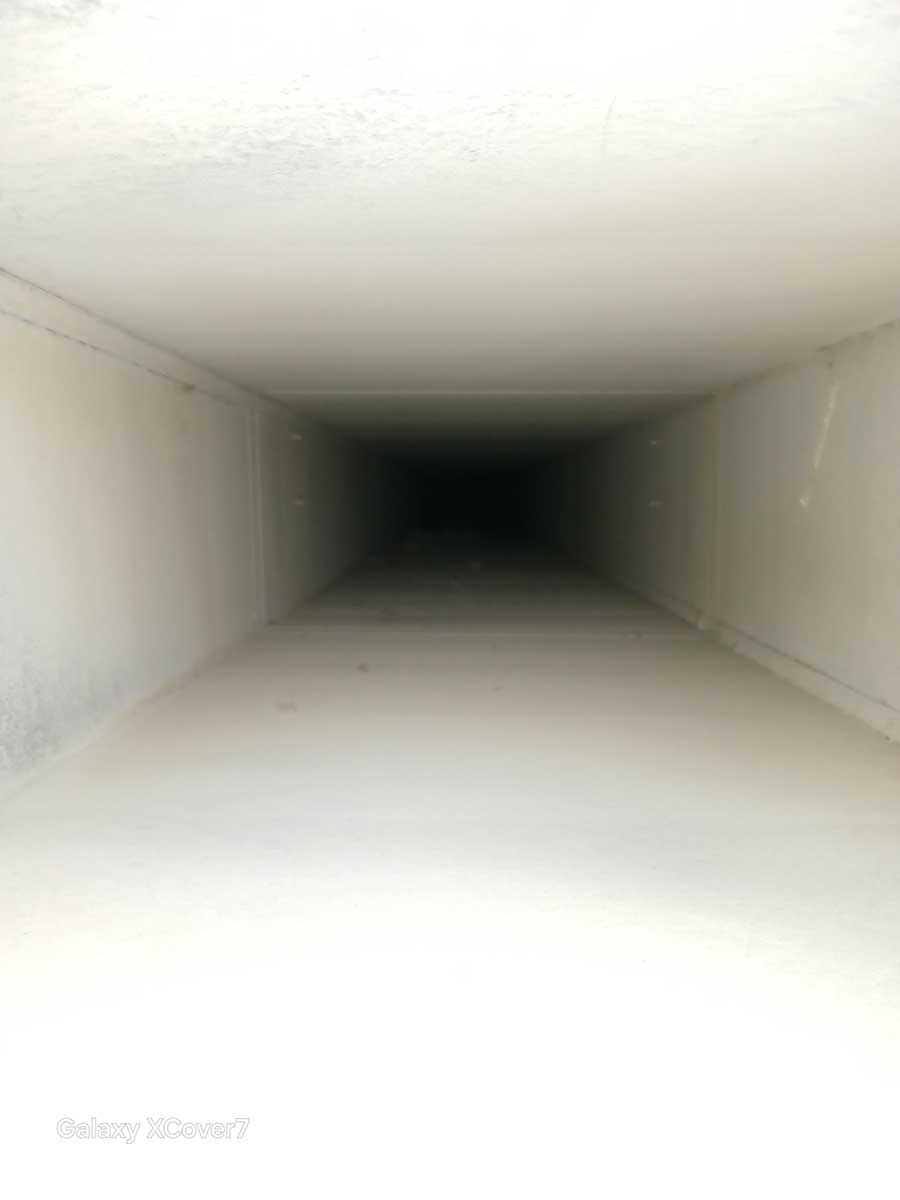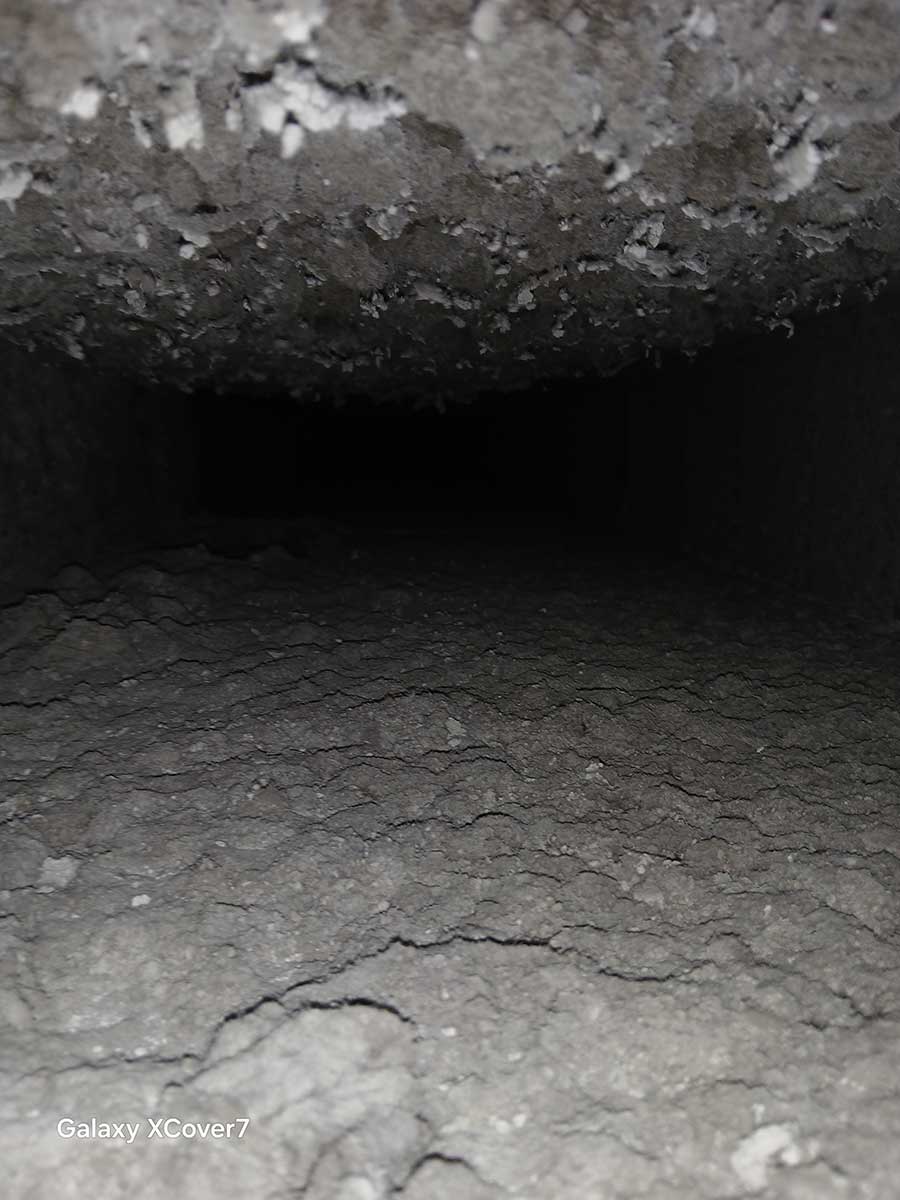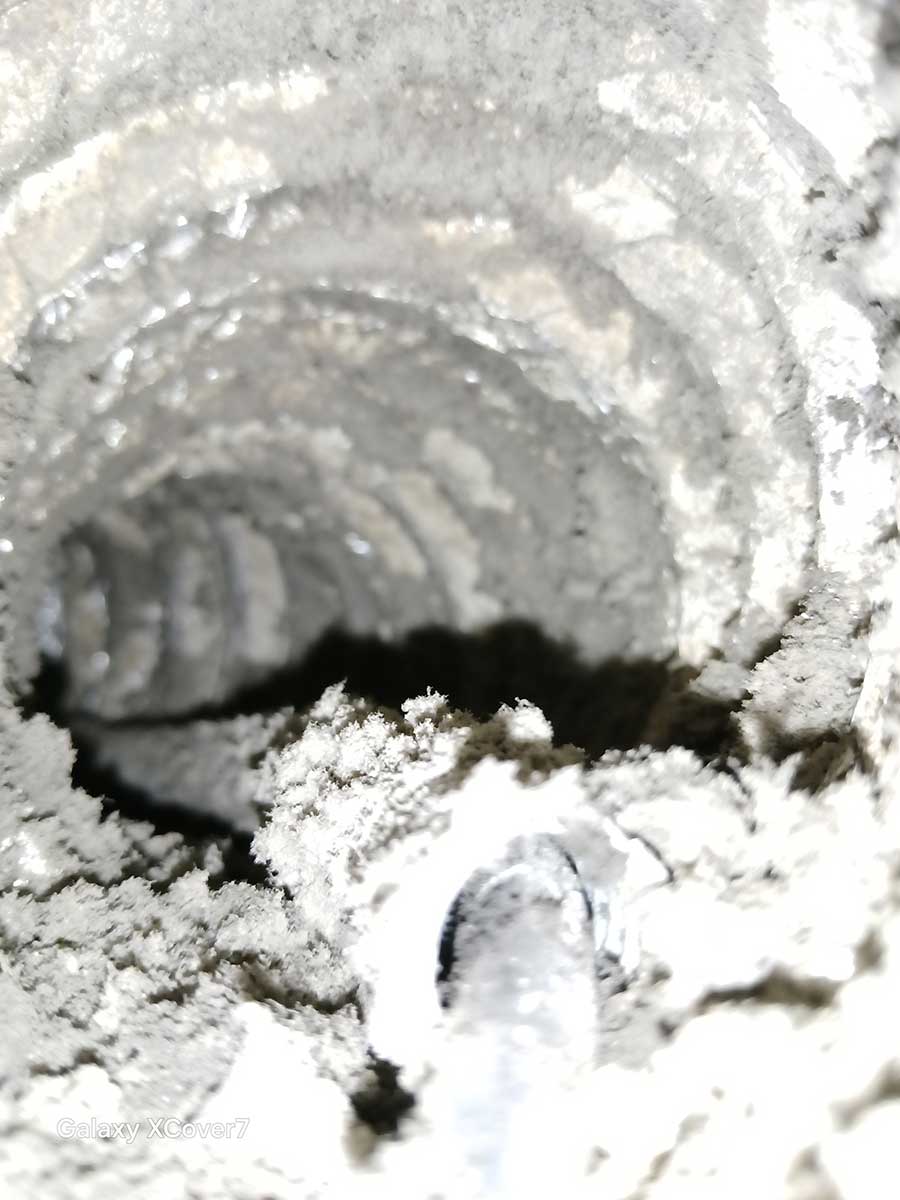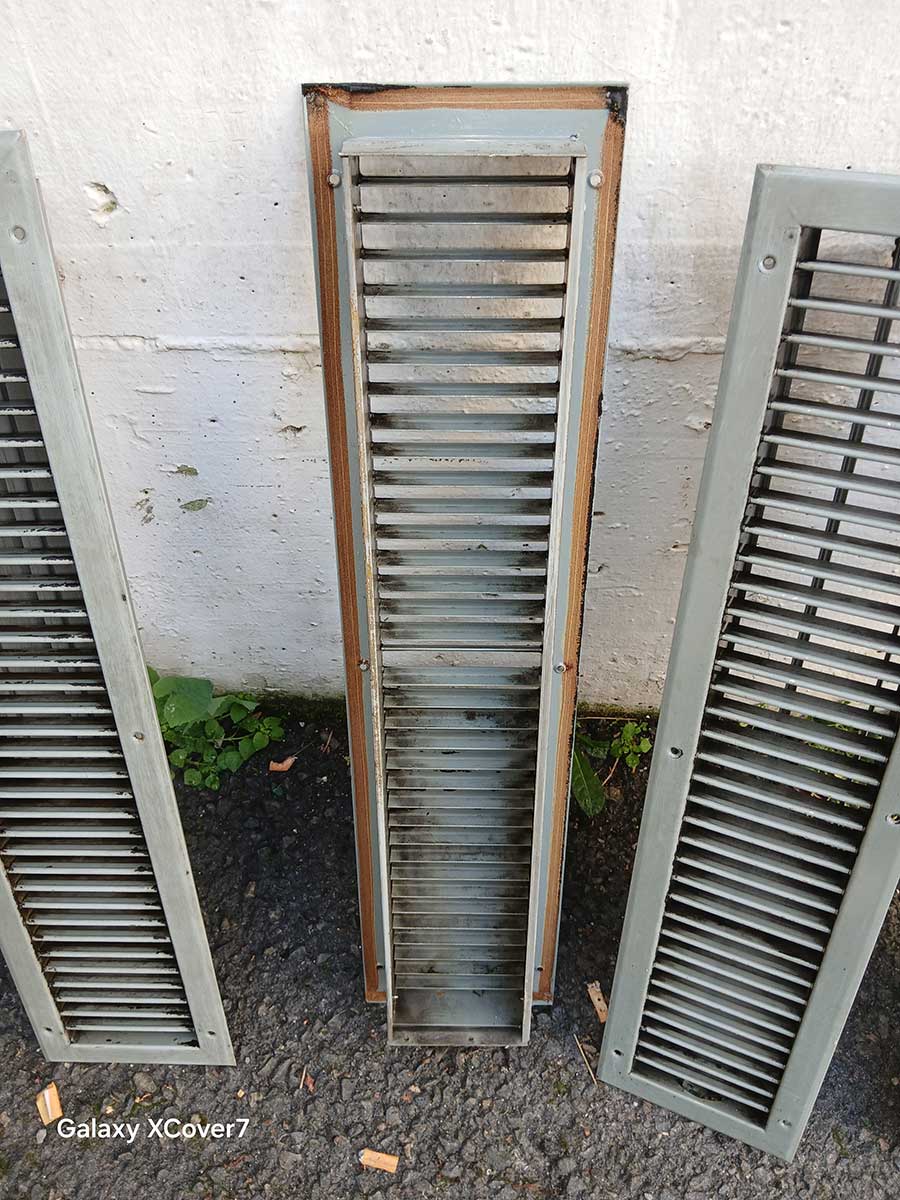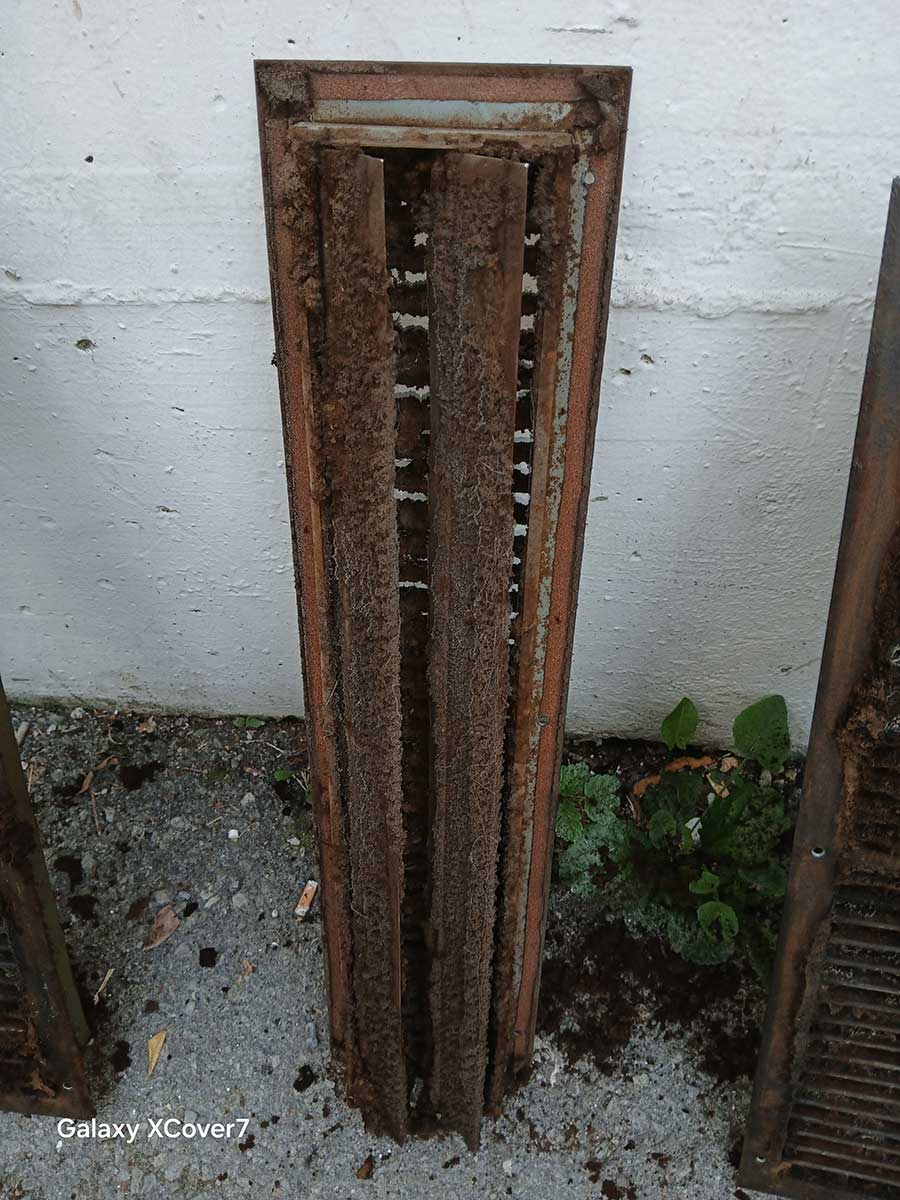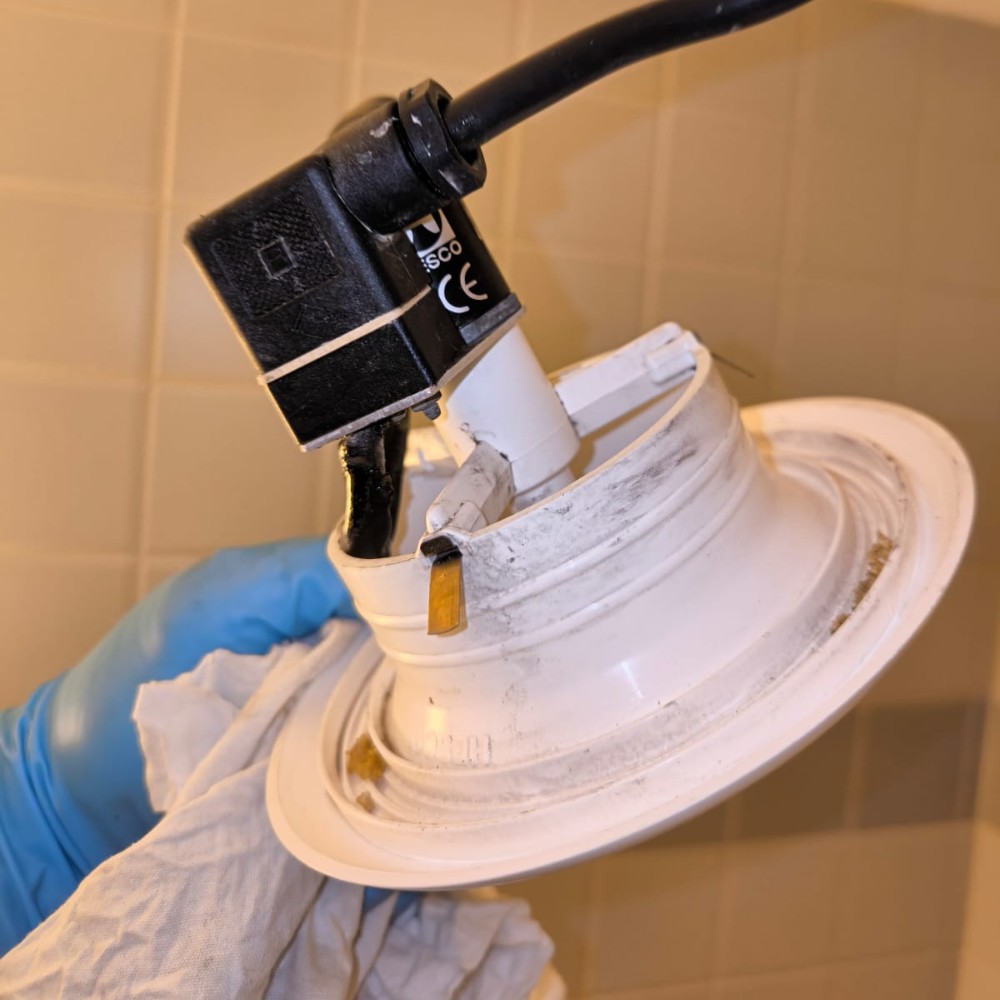What we offer
We operate throughout Switzerland to ensure healthier, safer environments through air-duct system sanitization and maintenance services.
Vesta Solutions Sagl
Air-duct sanitization and maintenance services for healthier air
Keeping ventilation systems clean and efficient is essential to ensure the quality of the air you breathe.
We provide professional, certified sanitization and maintenance of air-handling systems in residential, commercial, industrial, and institutional settings.
Inspection of air-handling systems
We analyze the condition of your ducts with advanced instruments to detect dirt, mold, or other contaminants.
Sanitization and remediation
We remove dust, bacteria, and allergens from ventilation ducts using safe, effective technologies.
Scheduled maintenance
We offer customized maintenance programs to keep your systems consistently efficient.
Remediation and hygienic treatment of HVAC systems
We improve the performance of air-conditioning and ventilation units, reducing health risks.
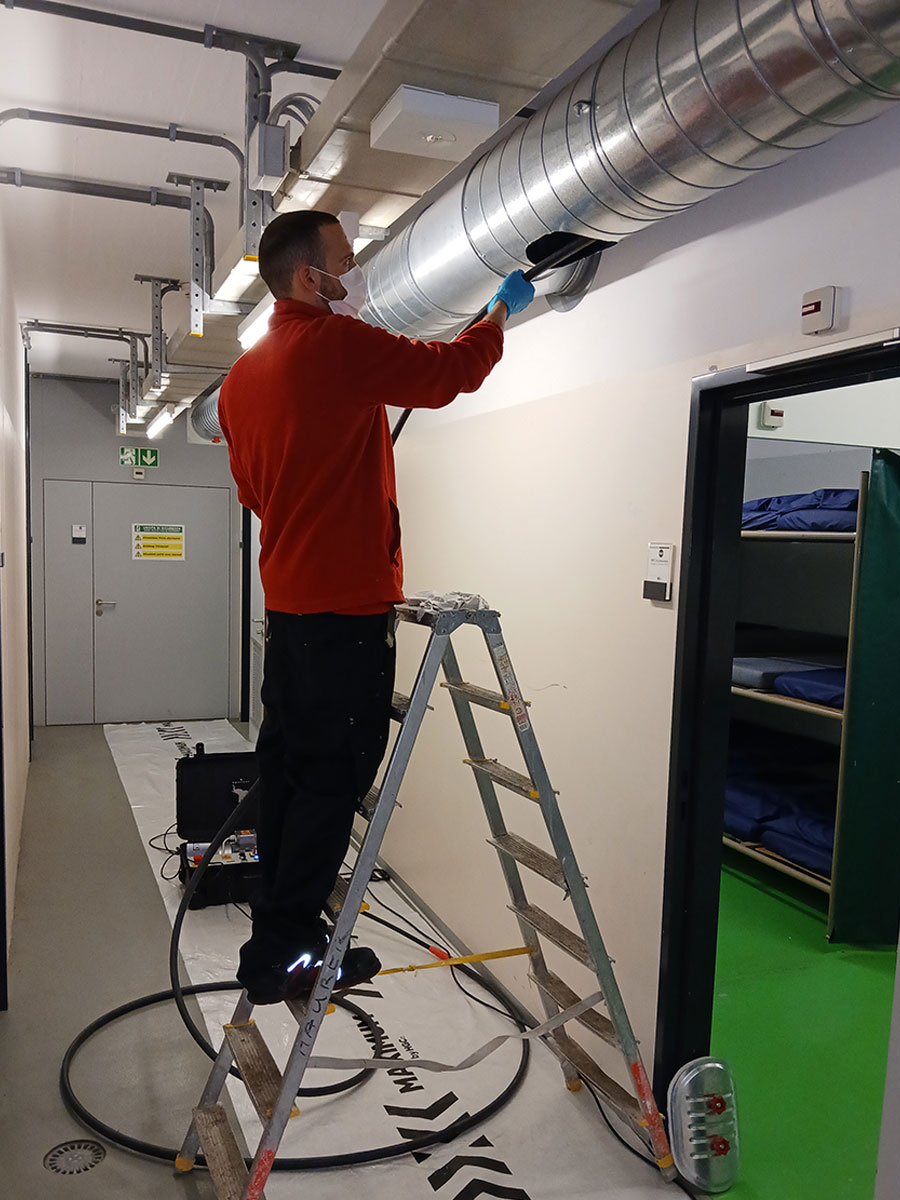
Sectors we serve:
Residential buildings
Homes, apartments, residential complexes.
Transportation
Ships, trains, cargo vessels.
Industrial buildings
Factories, woodworking shops, warehouses, bakeries, production plants, distribution centers.
Commercial buildings
Stores, offices, shopping centers, restaurants, cafeterias, bars, hotels, motels, nightclubs, casinos, bingo halls, spas, gyms, indoor pools, mortuary rooms, crematoria.
Public and institutional buildings
Schools, private nurseries, universities, hospitals, healthcare facilities, nursing homes, museums, libraries, government buildings, places of worship.
Specialized sectors
Scientific laboratories, clean rooms, operating theaters, pharmaceutical industry, food & beverage industry, data centers.
TV Inspection
TV inspection of air ducts and air-conditioning systems
A TV inspection of air ducts and air-conditioning systems is a fundamental practice for ensuring healthy, efficient, and regulation-compliant environments. Entrusting this task to specialized professionals guarantees accurate, targeted interventions that enhance occupants’ well-being and extend system life.
What is TV duct inspection?
TV inspection, or video inspection, involves the use of robotized equipment fitted with high-definition cameras that are inserted inside the air ducts. These devices provide a real-time view of the ducts’ interior, detecting dust build-ups, mold growth, blockages, or any structural damage.
How is a TV inspection carried out?
- Preparation – Before the inspection, a preliminary assessment of the system is performed to identify access points to the air ducts.
- Robot insertion – A tethered robot equipped with high-resolution cameras and LED lighting is introduced into the ducts. The device can move nimbly inside the ductwork—both horizontally and vertically—negotiating bends and joints.
- Monitoring and recording – The captured images are transmitted in real time to an external monitor, allowing operators to evaluate the ducts’ interior condition. The entire process is recorded for later, more detailed analysis.
- Analysis and report – At the end of the inspection, a comprehensive technical report is drawn up, including images and video that highlight the hygienic and structural state of the system. Based on the findings, cleaning, sanitization, or maintenance interventions can be scheduled.
Benefits of TV inspection
- Health & Safety – Identifying and removing contaminants reduces the risk of respiratory illnesses and allergies for building occupants.
- Energy Efficiency – Clean ducts ensure optimal airflow, improving system performance and lowering energy consumption.
- Regulatory Compliance – Keeping systems in optimal condition helps meet current hygiene and workplace-safety regulations.
- Failure Prevention – Early detection of anomalies or structural damage in the ducts allows timely intervention, avoiding costly breakdowns or service interruptions.
Sanitization and Remediation
Sanitizing and remediating air ducts and air-conditioning systems: ensuring a healthy, safe environment
Indoor air quality is fundamental to people’s health and well-being. If not properly maintained, air-conditioning systems and ductwork can accumulate dust, bacteria, mold, and other contaminants that compromise indoor hygiene. To keep spaces healthy and compliant with regulations, regular sanitization and remediation of air ducts and HVAC systems—aimed at the complete elimination of pollutant loads—are essential.
Why sanitization and remediation matter
- Health & well-being – A clean system supplies air free of contaminants, reducing the risk of respiratory illnesses and allergies.
- Energy efficiency – Removing obstructions and deposits in the ducts improves system performance, leading to significant energy savings.
- Regulatory compliance – Keeping systems in optimal hygienic condition is vital for meeting current safety and workplace-hygiene laws.
Sanitization and Remediation Process
- Preliminary inspection – Assess the condition of the system through visual checks or video inspections to detect contamination or anomalies.
- Mechanical cleaning – Physically remove dust and debris by brushing or using compressed air, ensuring that solid particles accumulated in the ducts are eliminated.
- Chemical sanitization – Apply biocidal products registered with the Ministry of Health to reduce the microbial load, eliminating bacteria, mold, and other pathogens.
- Component maintenance – Clean and sanitize every system element—including air-handling units (AHUs), diffusers, grilles, anemostats, dampers, silencers, coils, fan-coil units, and split units—to restore full compliance with hygiene standards.
Benefits of these interventions
- Improved air quality – Eliminating contaminants ensures a healthier environment for occupants and workers.
- Reduced health risks – Sanitization prevents the spread of pathogens such as Legionella, which can proliferate in poorly maintained systems.
- Performance optimization – Clean systems operate more efficiently, lowering energy consumption and operating costs.
- Enhanced environments – Clean air boosts comfort and satisfaction for customers and employees, improving the image of the company or facility.
Sanitizing and remediating air ducts and air-conditioning systems are essential steps for safeguarding indoor air quality and people’s safety. Relying on qualified professionals guarantees compliance with current regulations and helps create healthier, more comfortable spaces.
Complete Chemical-Physical Cleaning and Washing
Chemical-physical cleaning of AHUs and ductwork: thorough dust removal for healthier air
Indoor air quality largely depends on the maintenance of climate-control systems, especially Air Handling Units (AHUs) and their associated ductwork. Over time, dust, allergens, and other contaminants can accumulate inside these systems, undermining both energy efficiency and occupants’ health. To ensure healthy spaces and high-performance equipment, regular chemical-physical cleaning of AHUs and ducts is essential.
Why chemical-physical cleaning matters
- Health & well-being – Removing dust and contaminants prevents respiratory problems and allergies, providing cleaner, safer air for everyone.
- System efficiency – A duct network free of obstructions operates at peak performance, lowers energy consumption, and extends equipment life.
- Regulatory compliance – Regular maintenance of air-handling systems is often mandated by current regulations, ensuring adherence to safety and hygiene standards.
Cleaning and Washing Procedure
- Initial inspection – Evaluate the condition of AHUs and ductwork through visual checks or video inspections to identify dust build-ups, debris, or signs of contamination.
- Mechanical removal – Use techniques such as mechanical brushing or compressed air to physically dislodge solid particles from the interior surfaces of ducts and units. These methods ensure the effective elimination of accumulated dust.
- Chemical-physical washing – Apply specialised detergents to dissolve oily residues or encrustations inside the AHUs and ductwork. This step delivers a deep clean, eliminating contaminants that could compromise air quality.
- Sanitisation – After cleaning, disinfect the system with registered biocidal products to reduce microbial load and prevent the growth of bacteria and mould.
- Final verification – Carry out a post-service check to ensure all impurities have been removed and the system is operating correctly, thereby guaranteeing a healthy indoor environment.
Regular maintenance through chemical-physical cleaning and washing of AHUs and ducts is essential for indoor air quality and the efficiency of climate-control systems. Relying on specialised professionals for these operations ensures optimal results, supporting occupant well-being and compliance with current regulations.
Restoration to Hygienic Standards
Bringing HVAC systems up to hygienic code: ensuring health and energy efficiency
Indoor air quality is closely tied to the upkeep of HVAC systems (Heating, Ventilation, and Air-Conditioning). In Ticino, components such as Air Handling Units (AHUs), ducts, diffusers, grilles, anemostats, dampers, silencers, coils, fan-coil units, and split units can accumulate dust, allergens, and pathogens over time. A hygienic-standard restoration is essential to provide healthy environments and keep systems operating correctly.
Why hygienic restoration matters
- Health & well-being – Removing contaminants prevents respiratory illnesses and allergies, ensuring clean air for occupants.
- Operational efficiency – Clean systems run optimally, lowering energy consumption and operating costs.
- Regulatory compliance – Meeting hygienic standards is legally mandatory, guaranteeing safety and well-being in workplaces and public spaces.
Restoration procedure
- Technical inspection – Initial assessment of the system’s hygienic condition through visual checks or video inspections.
- Mechanical cleaning – Physical removal of dust and debris by brushing or compressed air, eliminating impurities from internal surfaces.
- Chemical sanitization – Application of registered biocidal products to reduce the microbial load, eradicating bacteria, mold, and other pathogens.
- Comprehensive remediation – Treatment of every system component—including AHUs, ducts, diffusers, grilles, anemostats, dampers, silencers, coils, fan-coil units, and split units—ensuring thorough, uniform cleaning.
- Final verification – Post-service check to confirm the system has been restored to hygienic standards and is operating correctly.
Standards & Regulations in Ticino
In Switzerland and in the Canton of Ticino, HVAC system maintenance must comply with specific technical standards and regulations.
- SIA 382/1:2014 – This Swiss norm defines the energy requirements and guidelines for the design, installation, and maintenance of ventilation and air-conditioning systems.
- RUEn (Canton Ticino Energy Use Regulation) – Governs thermal insulation and the energy efficiency of ventilation and air-conditioning installations, requiring protection against heat transmission in accordance with clause 5.9 of SIA 382/1:2014.
Restoring HVAC systems to hygienic standards is essential both to ensure indoor air quality and to maintain building energy efficiency. Engaging certified professionals and adhering to these recognized standards guarantees effective, regulation-compliant interventions, thereby enhancing occupant health and safety.
Microbiological Abatement
Microbiological abatement in HVAC systems: safety and compliance with Swiss regulations
Indoor air quality is closely linked to the upkeep of HVAC (Heating, Ventilation & Air-Conditioning) systems. Over time, these installations can harbor harmful microorganisms—bacteria, mold, and viruses—that pose a health risk to building occupants. To ensure a healthy and safe indoor environment, it’s essential to carry out microbiological abatement using biocidal chemical agents that meet Swiss regulatory standards.
Why microbiological abatement matters
- Health & safety – Eliminating pathogenic microorganisms reduces the risk of infections and respiratory illnesses among occupants.
- System efficiency – A system free from microbial contamination operates more efficiently, ensuring better heat exchange and lower energy consumption.
- Regulatory compliance – Using approved biocides and following standardized procedures guarantees adherence to Swiss laws on safety and hygiene.
Microbiological Abatement Procedure
- Initial assessment – Inspect the system to identify the presence and type of microbial contamination.
- Preliminary cleaning – Mechanically remove dust and debris to prepare all surfaces for biocide application.
- Biocide application – Treat the internal surfaces of the system with approved biocidal products, following manufacturer instructions and current regulations.
- Rinse and drying – Eliminate any biocide residues and thoroughly dry all treated surfaces to prevent microbial regrowth.
- Final verification – Conduct a post-treatment inspection to ensure the procedure’s effectiveness and confirm no residual contaminants remain.
Swiss Biocide Regulations
In Switzerland, the use of biocidal products is regulated to ensure the safety and effectiveness of treatments. Biocides used in HVAC systems fall under Product Type 2 (PT 2), which includes disinfectants for private and public areas, including those for air-conditioning systems. It is essential that the products employed are authorized by the Federal Office of Public Health (FOPH) and used in accordance with the provided guidelines.
Microbiological abatement in HVAC systems is crucial for ensuring air quality and occupant health. Relying on qualified professionals and using biocidal products that comply with Swiss regulations guarantees effective and safe interventions, contributing to overall well-being and legal compliance.
Subscription Service – Preventive Maintenance
Air-duct maintenance: why it’s essential and the benefits of a dedicated service
Air ducts play a crucial role in ensuring indoor air quality within residential, commercial, and industrial buildings. A clean, well-maintained ventilation system not only enhances occupant comfort but also protects the equipment itself by preventing dust buildup, mold growth, and potential blockages that can lead to costly structural damage.
However, as with many “hidden” parts of a building, their importance often becomes apparent only when a problem arises—bringing inconvenience and service interruptions that can be expensive. To prevent these issues, the most effective approach is to schedule regular inspections and maintenance with qualified professionals.
Vesta Solutions Sagl Preventive Maintenance Subscription
Choosing a periodic maintenance subscription for your air ducts means entrusting all upkeep tasks to a specialized team. With a tailored service plan for your property, you receive ongoing monitoring and detailed documentation of every intervention.
Key Benefits
1. Enhanced Reliability
Regular maintenance minimizes the risk of blockages or failures, ensuring uninterrupted comfort and operation of your facility.
2. Predictable Budgeting
A subscription model spreads out costs over time and helps you avoid unexpected repair bills.
3. Optimized Performance
Consistent upkeep keeps systems running at peak efficiency, reducing energy consumption and extending equipment lifespan.
4. Comprehensive Reporting
Each visit includes a full report—complete with findings, photos, and recommended actions—so you always know the condition of your ducts.
5. Regulatory Peace of Mind
Scheduled maintenance helps ensure compliance with hygiene and safety regulations, protecting both occupants and your liability.
Maintenance of air ducts is not only a matter of hygiene and health—but also a way to protect your real estate investment. A preventive maintenance subscription with Vesta Solutions Sagl guarantees scheduled service visits and ongoing support, freeing owners from any concerns and ensuring the system continues to operate correctly over the long term.
With regular inspections and precise documentation, you can avoid costly issues and inconvenient downtime, while benefiting from favorable pricing, maximum system reliability, and rapid-response assistance whenever needed. A small, consistent commitment today can translate into significant savings and complete peace of mind tomorrow.
